Skinification
on
Skin care
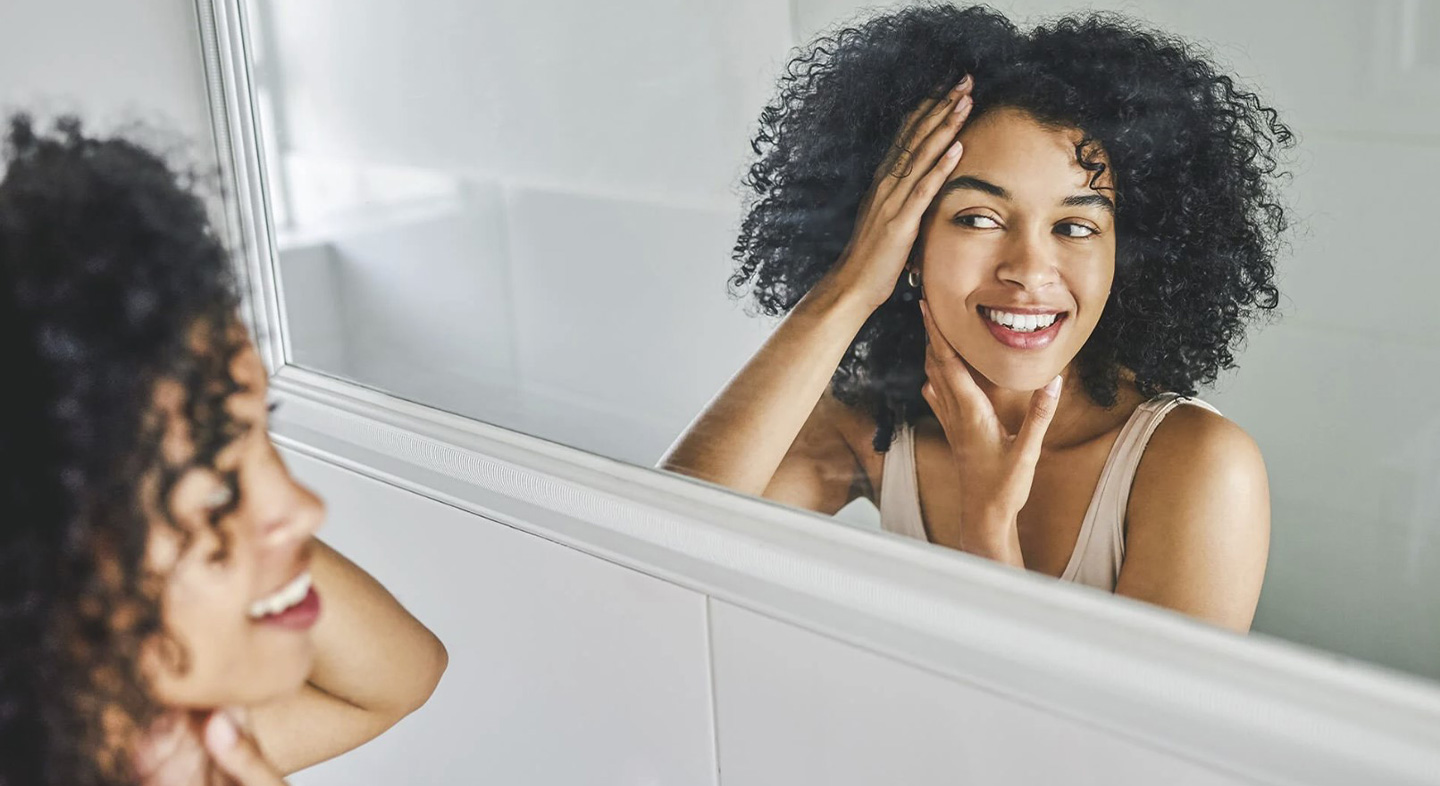
peer-reviewed
Hair Skinification -
The cosmetic revolution for a new era of hair care
CHIARA CHIARATTI*1, VALENTINA ABBONDANDOLO2
*Corresponding author
1. Cosmetics and personal care project manager, Mérieux NutriSciences
2. Senior product manager, Mérieux NutriSciences
ABSTRACT: The concept of scalp care as hair treatment decodes into the idea that we should devote the same care to the skin of our head as we do to the skin of our face. From exfoliation to hydration to the use of anti-ageing ingredients, the scalp is now reaping all the benefits of a customised facial treatment, thus improving hair growth and appearance. Developing an integrated, multi-instrumental approach to benefit from the synergies of different expertise is essential to support the claims of increasingly sought-after hair care products.
INTRODUCTION
In the cosmetics world, innovation never stops. We are talking about the new trend that is revolutionising the industry: Hair Skinification. This movement treats hair and scalp with the same care as skin, emphasising the importance of quality ingredients, customised routines and sustainable solutions.
In this article, we would like to propose our key take on it and explore testing strategies to prove three key topic: scalp wellness, products for treated hair, and solutions for “differently young” hair.
SCALP HEALTH – Products for scalp care: the basis of everything. The scalp, often overlooked in beauty routines, is the fertile ground from which hair grows. Hair Skinification places a new emphasis on the scalp, considering it an extension of the facial skin. The use of gentle exfoliants, nourishing masks, and antioxidant-rich serums is becoming increasingly popular. These products are formulated to purify, nourish and balance the scalp, promoting healthy and strong hair growth. This holistic approach to scalp wellness not only improves hair health, but can also reduce problems such as dandruff and itching. European market data for scalp care products show exponential growth: according to a recent study, this sector is expected to grow at an annual rate of about 6.5 % (CAGR) over the next five years. [1,2]
BEAUTIFYING HAIR - Products for treated hair: a targeted approach. Chemically treated – coloured, bleached – or heat-treated hair requires special attention. Hair Skinification focuses on repairing and protecting this hair, using products that restore lost lipids and strengthen the hair structure. For treated hair, the European market shows a positive trend: it was found that products specifically for coloured or treated hair account for about 20% of the total hair product market in Europe. Furthermore, this segment is expected to grow by 7-8% per year, as more and more consumers look for products that not only repair damage but also prevent further aggression.[1,2]
PRECIOUS HAIR -Products for “differently young” hair: renewing and strengthening. The latest frontier of Hair Skinification addresses two of the biggest aesthetic concerns: greying and hair loss. Research in this area is making great strides, offering innovative and effective solutions. For grey hair, the focus is on products that go beyond simple colour coverage. Ingredients such as antioxidants and natural mineral pigments are used to improve the shine and vitality of grey hair, while maintaining a natural, healthy appearance. In addition, specific serums and supplements are designed to protect the hair’s natural pigmentation. For baldness, research focuses on ingredients that stimulate hair growth and prevent hair loss. These products work to in vigorate dormant follicles and promote thicker and stronger hair growth. The grey hair and baldness product segment is experiencing significant innovation, with a 9% increase in the last year alone. With an ageing European population, demand for products addressing these issues is increasing. Advanced serums and treatments that promote hair growth or maintain natural colour are gaining in popularity, with the market rapidly expanding to meet these needs. [1,2]
THE HAIR SKINIFICATION ANALYTICAL APPROACH
The testing methodologies may be different as there is no list of 'officially approved' tests -in order not to put a brake on innovation, creation and research- to be used for the confirmation of label claims, but ad hoc protocol must be drawn up based on the product type [3,4,5]:
1. Performance measurement using instrumental methods
2. Performance evaluation with clinical or ex-vivo methods.
3. Sensory or performance perception testing
SCALP HEALTH – Products for scalp care: the basis of everything
Dandruff results not only from a subjective predisposition but also from a proliferation of Malassezia furfur. Malassezia is a fungus whose excessive presence causes an imbalance between the scalp’s sebum and the activation of the immune system, generating flaking of the scalp’s stratum corneum. There are active ingredients and formulations on the market that boast anti-dandruff action and sebum-normalising effects on the scalp and which -when used consistently and continuously over a period of at least one month- are effective in controlling the dandruff formation and reducing scalp seborrhoea. For this type of evaluation, we adopted a clinical study combined with instrumental measurements of the scalp.
Study design. The product examined is an anti-dandruff/sebonormalising scrub to combat dandruff on an oily scalp. After having accurately selected a panel of 30 subjects deemed suitable, they started the test by using a neutral shampoo for 15 days. Once the test started (T0) with the test product applied three times a week, efficacy evaluations were carried out at 30 days (T30 – intermediate) and at 60 days (T60 – end of treatment). [6]
Clinical evaluation. A dermatologist specialising in trichology carried out the clinical evaluations. The head was divided into 5 areas and for each sub-area, an objective evaluation was carried out by means of clinical scores from 0 to 5 for dandruff (from 0 absent to 5 high quantity). For each subject involved in the study, an average of the clinical scores recorded in the whole head was made.
Instrumental evaluation. An instrumental evaluation of seborrhoea of the scalp was performed using the SEBUMETER SM 815, an instrument capable of returning a simple and direct measurement of skin sebum, thanks to which various skin types can be classified. It is therefore a controlled observation of the skin’s sebaceous function (photometry of the grease spot). The treatment was effective in reducing the amount of sebum in the treated areas at all times considered (significant differences for p < 0.05). Specifically, after 1 month of treatment the mean sebometry values were reduced from 253.4 (T0 basal conditions) to 215.1 (-14.2%), and to 192 (-24%) after 2 months of treatment. Following the use of the product, the panel switched on average from the ‘oily’ to the ‘normal’ category, thus demonstrating the effective ‘sebum-normalising’ action of the product under investigation (Graph.1).
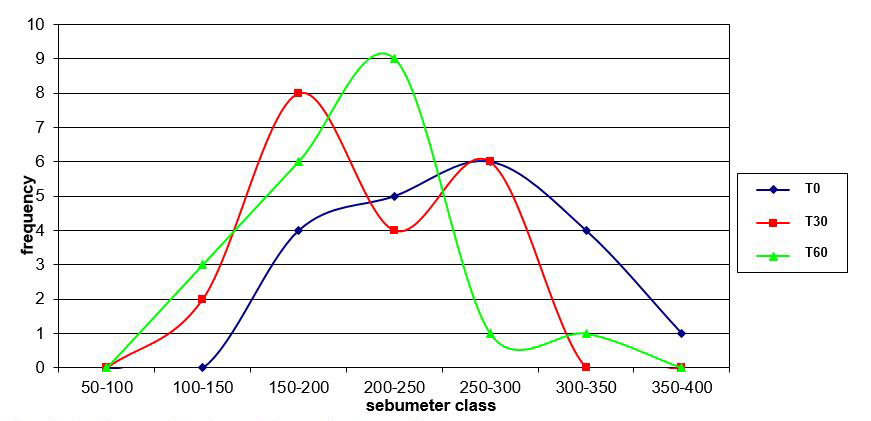
Graph.1. Change in sebometric reading over time.
Dermatological evaluation. The objective evaluation of the scalp -at the beginning, in the middle and at the end of the treatment- reveals a real efficacy of the anti-dandruff product in terms of progressive reduction of the scales quantity and thickness, in some cases up to complete resolution of the problem after two months of treatment. The sebum-normalising product effect also appears visually satisfactory: in most cases, the scalp objective examination showed a reduction in seborrhoea. However, interviewing the volunteers indicated that, for the majority of subjects, the hair became progressively 'heavier' at the roots and drier at the ends. From all this, it can be deduced that subject compliance was difficult: therefore, the product is effective, but not appreciated by consumers.
Subjective evaluation. The data obtained from the dermatological evaluation were supported by the subjective evaluation, which confirmed the scalp conditions improvement in terms of dandruff oily hair reduction (80% of volunteers). However, most of the volunteers expressed a negative opinion of the treatment, as it made the hair considerably difficult to comb, poorly shiny and thus, despite the reduction in dandruff and seborrhoea, the hair suffered in terms of softness and combability. In this case, a change in the formulation would be appropriate.
BEAUTIFYING HAIR - Products for treated hair: a targeted approach
In order to be trendy, to make hair easier to manage or for the simple pleasure of pleasing themselves, people are inclined to try new and ever-changing treatments, in search of better performing, protective and hair-friendly products.
Study design. In this case, a different approach was employed. The treatment performance involving a succession of cosmetic products to be used in sequence on ex vivo natural hair strands was evaluate:
1) lightening dyeing from brunette (basal situation) to dark blonde (post-colouring)
2) post-dyeing treatment involving the special shampoo and vials -strengthening and restructuring action- application for at least 1 month after dyeing
3) thermo-protective serum to be applied before drying the hair with a hair dryer and straightener.
Colour evaluation. We estimated that on average a person performs about 2/3 washes per week, equivalent to 10 washes per strand. After each wash, a film-forming treatment was always applied to the strand to preserve the hair from damage by blow-drying and straightening. To carry out the comparison evaluations before/after the treatment application, the following analytical targets were considered:
- Colour evaluation (Post Colour): post dye application colorimetric evaluation by means of a special DIGI-EYE image analyser, a real 'digital eye' that allows colour differences to be quantified.
- Correlation of colour loss during washes/treatments by means of colorimetric evaluation to demonstrate the protective efficacy of the shampoo - long colour maintenance.
- Cuticle protection action by application of the product with film-forming action.

Figure 1A. Before the lightening dyeing and colour application - BEAUTIFYING HAIR.
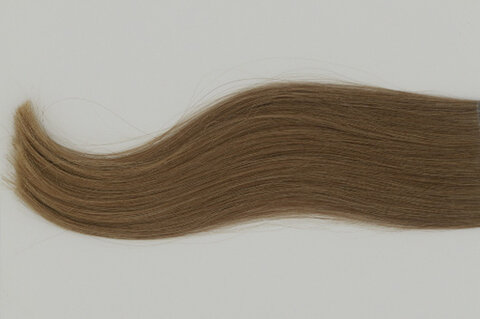
Figure 1B. After the treatment- BEAUTIFYING HAIR
As can be seen from the images obtained (Fig. 1A-1B), the instrument is able to photograph and translate the colour of the lock with a numerical parameter. The visible difference, but also the one less easily perceptible to the naked eye, can be quantified and then statistically evaluated. The same evaluations were carried out after each wash, and the delta E colour change (∆E=14) was found to be non-significant. This showed that the shampoo and post-treatment vials were effective in preserving the initial colour, as if it had just left the salon.
Hair repair. Because of colouring/bleaching treatments, blow-drying, styling, or due to stress and eating disorders, hair tends to become brittle and the hair's cuticles to lift. There are products on the market with a film-forming action and, if applied before styling or using straighteners at high temperatures, they create a thin film on the hair fibre that protects it from chemical and physical damage.
Salon test in vivo-specific for hair care. Salon Research Centres support the performance evaluation of hair products, especially for professional use, where the product or treatments are applied on volunteers selected based on different hair types by trained professionals. This is an empirical evaluation carried out under specific conditions of use with expert opinion before and after application. Usually the evaluations include score judgments on the product quality (consistency, foam, texture, firmness, application and ease of rinsing), as well as the cosmetic performance on the hair (shine, density, thickness, volume, moisture, frizz control, static, hold, curl retention and definition and manageability, Combability and touch/feel wet & dry, Colouration result, Drying time). Increased hair brightness is an expectation that is demanded of most hair care treatments, and can be assessed both in vivo by salon testing and ex vivo by treatment on locks, using analytical techniques based on DCS diffuse light reflection such as the glossmeter. After the application of a specific professional treatment and styling, the lock registers an increase in brightness, which is also quantified by instrumental measurements: between before and after treatment, an increase in the 'specular brightness' parameter correlated with brightness of +24.6%. (Fig.2)
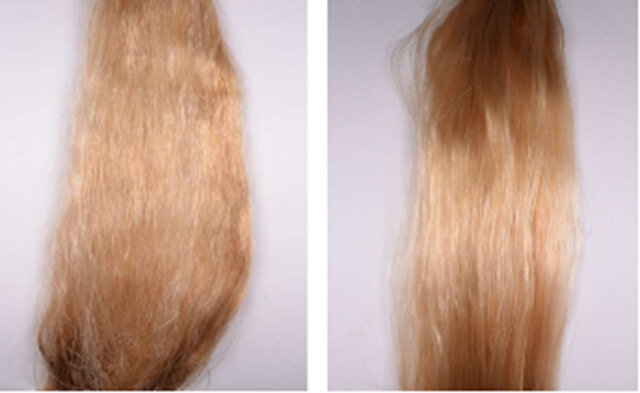
Figure 2. Before and after the application of a specific professional treatment and styling.
PRECIOUS HAIR - Products for “differently young” hair: renewing and strengthening.
Hair loss treatment. Hair loss treatments are long-lasting, as constant and repeated applications over time are necessary to appreciate a significant result. In order to be effective, it will be essential that the product meet the consumer's compliance in the best possible way. First and foremost, therefore, the product must be absolutely well tolerated and must not give any undesirable effects. Moreover, the treatment must also be appreciated from a sensory point of view (e.g. appearance, smell, consistency). Finally, the product must be easily absorbed without weighing down the hair or altering the scalp.
Study design. In this latest study, the cosmetic products tested were two anti-fall serums, the first with immediate shock action and the second with maintenance action.
The test was carried out after recruiting 30 volunteers selected by the trichologist and deemed suitable to participate in the study. The volunteers started the test by using a neutral shampoo for 15 days. Once the test started (T0) with the "shock action vial" product applied 3 times a week, efficacy evaluations were carried out at 15 days (T15 - intermediate), after which the volunteers changed treatment by applying the "maintenance action vial" product until completion of the treatment period (90 days - end of treatment).
Decreased hair loss. The efficacy of reducing hair loss was evaluated with various methodologies, by means of pull-tests before and after use of the product, combined with clinical evaluation (trichoscope). The results can show any reduction in miniaturisation (thinning) of the hair and the ratio of miniaturised (short and thin) hair to normal hair. These results are always associated with an interview carried out by a doctor / trichologist with the volunteers, as well as a subjective assessment of the perceived effectiveness and enjoyment of the treatment.
Results. After 3 months of constant application, the results obtained show that the product is able to reduce spontaneous hair loss in the majority of subjects recruited (Fig.3).
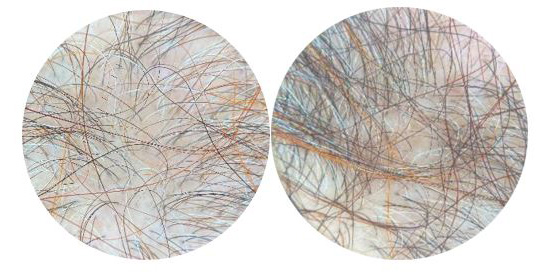
Figure 3. Clinical / trichoscopic assessment of thinning-thinning before and after treatment.
A radiant grey hair. Nowadays, natural grey hair has become a real stylistic choice for women. However, natural grey hair has special characteristics and deserves to have lines dedicated to its treatment. They usually become thick, unmanageable, and straw-like to the touch. Instead, they can be very elegant and sensual if treated in the right way.
Instrumental evaluation. The analytical technique of trichoscopy combined with clinical judgement and expert opinion by means of salon tests is helpful in assessing the degree of grey and classifying each subject before and after a specific treatment. The hair is ideally subdivided into five assessment zones, and a subjective assessment is made on each vein using a 5-point scale, attributing a 4-level score to each shade of grey. The grey values taken into consideration were yellowed/oxidised grey, dull grey, bright grey, natural grey. The trichologist's objective judgement is then based on the average between before and after treatment of how the scores associated with these assessments change on each test area considered.
Evaluation by trained judges. From a sensory point of view, it is necessary to:
- involve a panel of judges trained in sensory evaluation of hair, focusing on texture
- involving a sufficient number of volunteers with precise characteristics: 100% grey hair and length at least up to the shoulder
- select the appropriate assessment method: relative to reference rating method - comparison, for each volunteer
- define the evaluation protocol, selecting attributes (characteristics) to be evaluated, in this case shine, combability, electrostatic effect, greasiness, smoothness, roughness, coverage were selected (Tab.2).
Results. The product developed for grey hair was found to be effective in improving the health of the hair by increasing combability, smoothness and moisture, reducing electrostatic effect and roughness (Graph. 2).
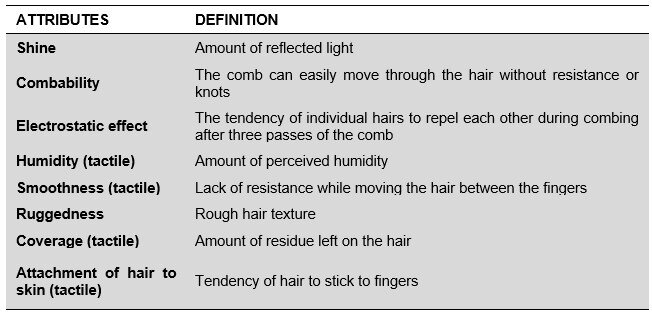
Table. Evaluation by trained judges - attributes selected.
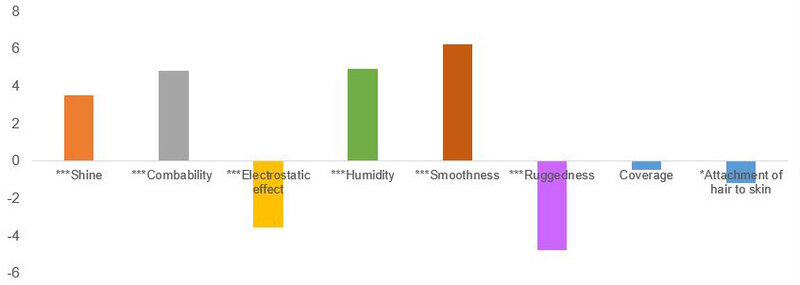
Graph.2. Results evaluation by trained judges - attributes selected.
CONCLUSION
Hair Skinification is not just a trend, but also a revolution in the way we approach hair care. With a focus on scalp health, specific solutions for treated hair, and innovations to tackle grey hair and baldness, this movement is redefining the standards of beauty and hair care. Combining science and trend, Hair Skinification promises healthier, stronger and hair that is more beautiful. European market data clearly show that Hair Skinification is more than just a trend; it is a shift consumer’s perception and purchasing of their hair care products. This movement, combining science and innovation, is opening up new avenues for manufacturers and consumers, with a significant impact on the European hair care market.
References and notes
Commission Regulation (EU) No 655/2013 of 10 July 2013 laying down common criteria for the justification of claims used in relation to cosmetic products Text with EEA relevance
Guidelines for The Evaluation of the Efficacy of Cosmetic Products; COLIPA Guidelines 5 2008
Directive 2005/29/CE: https://eur-lex.europa.eu/legal-content/EN/TXT/PDF/?uri=CELEX:32005L0029
- WMA Declaration of Helsinki – ethical principles for medical research involving human subjects
